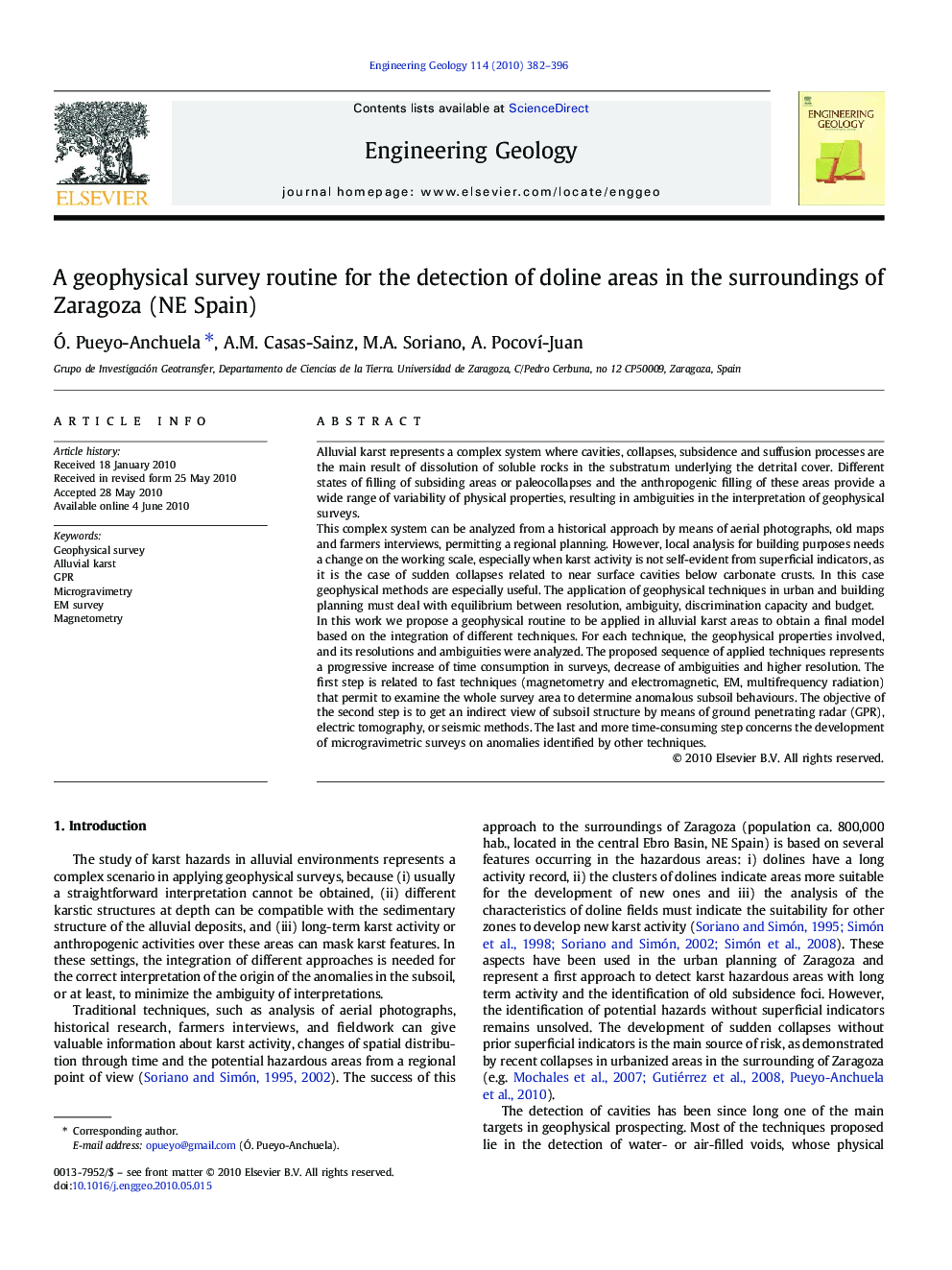| کد مقاله | کد نشریه | سال انتشار | مقاله انگلیسی | نسخه تمام متن |
|---|---|---|---|---|
| 4744318 | 1641865 | 2010 | 15 صفحه PDF | دانلود رایگان |

Alluvial karst represents a complex system where cavities, collapses, subsidence and suffusion processes are the main result of dissolution of soluble rocks in the substratum underlying the detrital cover. Different states of filling of subsiding areas or paleocollapses and the anthropogenic filling of these areas provide a wide range of variability of physical properties, resulting in ambiguities in the interpretation of geophysical surveys.This complex system can be analyzed from a historical approach by means of aerial photographs, old maps and farmers interviews, permitting a regional planning. However, local analysis for building purposes needs a change on the working scale, especially when karst activity is not self-evident from superficial indicators, as it is the case of sudden collapses related to near surface cavities below carbonate crusts. In this case geophysical methods are especially useful. The application of geophysical techniques in urban and building planning must deal with equilibrium between resolution, ambiguity, discrimination capacity and budget.In this work we propose a geophysical routine to be applied in alluvial karst areas to obtain a final model based on the integration of different techniques. For each technique, the geophysical properties involved, and its resolutions and ambiguities were analyzed. The proposed sequence of applied techniques represents a progressive increase of time consumption in surveys, decrease of ambiguities and higher resolution. The first step is related to fast techniques (magnetometry and electromagnetic, EM, multifrequency radiation) that permit to examine the whole survey area to determine anomalous subsoil behaviours. The objective of the second step is to get an indirect view of subsoil structure by means of ground penetrating radar (GPR), electric tomography, or seismic methods. The last and more time-consuming step concerns the development of microgravimetric surveys on anomalies identified by other techniques.
Journal: Engineering Geology - Volume 114, Issues 3–4, 10 August 2010, Pages 382–396